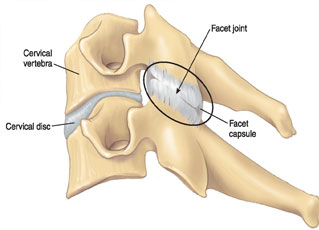A Pain in the Neck

Have you ever woken up with pain in the neck, difficulties turning your head and stiffness particularly on one side? If you have, you may have had what Physiotherapists refer to as Acute Wry neck pain.
So, what exactly is Wry neck?
An acute episode of Wry neck is relatively common as far as neck pathologies go and is generally seen, but not limited to, children and adults between 12-30 yrs. It can be characterised by a sudden onset of pain and stiffness which results in a protective decreased range of movement. It normally occurs after being in a prolonged awkward position/posture, or can occur after a sudden movement of the neck (such as in trauma). As a result, the joints in the neck can become stiff and locked which results in movement that is limited by pain and a visible postural deformity.
Anatomy:
There are two main types of acute Wry neck pain.
- Type 1 – Discogenic wry neck pain
- Type 2 – Facetagenic wry neck pain
The neck is made up of a sequence of bones known as the cervical vertebrae that form a column to protect structures such as the spinal cord and blood vessels, as well as shaping our posture. Each vertebrae connects to the next one at 2 points of contact – The disc (centrally) and the facet joints (at the back) See picture below. The function of the joints is the support weight as well as allow for movement. Discogenic wry neck pain (Type 1) comes from the more central connection around the discs, whereas facet joint wry neck pain (Type 2) comes from the facet joints on either side at the back.
Who is most at risk of Wry neck?
- Travellers who have just been flying – sleeping in awkward positions
- Holiday goers sleeping on different mattresses and pillows
- People working at desks with poor posture and prolonged sitting positions
- Gym goers – repetitive overhead lifting
- Those who have an old/ the wrong pillow
- Those who’ve had a reduction in exercise
So how does it work?
During normal movement, the facet joints in the neck undergo a combination of forces at different angles to provide corresponding neck and head movements. If these are extreme forces, repetitive forces or sustained forces, injury can occur to the connective tissue surrounding the structures or the cartilage that lines the joints.
- Extreme forces may be trauma or whiplash
- Repetitive forces may be for eg. Watching a tennis match moving head side to side or looking at a computer screen with the neck more rotated one way
- Sustained forces may be a poor sitting/sleeping posture or awkward positions such as sleeping on a flight
As a result of the injury to the connective tissue or cartilage certain movements become painful resulting in a restriction in movement. This can in turn create further problems such as:
- Discrepancies in muscle control and coordination
- Increased muscle tone (stiffness) with tight bands of muscle fibres
- Alterations in muscle length
- Reduction in strength and endurance of the muscles around the neck
Signs and symptoms:
Common signs and symptoms may include:
- Severe neck pain (usually one side) that can refer to the head or shoulder
- Tilting of the head to one side (postural deformity)
- Stiffness of the neck
- Reduction in the range of movement in the neck
- One shoulder sitting higher than the other
- Swollen muscles of the neck
- Headaches
Treatment:
Physiotherapy
Treatment generally involves:
- Therapeutic mobilisation of the facet joints to reduce the stiffness and restore normal movement
- Soft tissue massage to release and relieve tight muscles
- Postural education
- Strategies to unload the neck – pillows, postures etc.
- Self-management strategies
- Clinical pilates exercises – retraining motor control
- Dry needling – to reduce pain and protective muscle spasm
- Pillow education – finding the right pillow
- Stretches – targeting muscles to prevent the neck from returning to being stiff
- Home exercise program – specifically tailored and individualized to reduce pain, regain movement and decrease reoccurrence
With effective treatment symptoms usually subside within a few days but can last up to 2 weeks in some presentations.
Massage
Once a Physiotherapist has assessed the neck, deep tissue massage may be required to assist with secondary dysfunction including increased muscle tone, trigger points and stiff joints.
Pilates
After this time once the pain has subsided and movement is back to normal, a Physiotherapist can tailor a specific Clinical Pilates program to help prevent further occurrences. Pilates programs include postural retraining in different positions (sitting, lying, standing, kneeling etc.), as well as offering conditioning for the mid to upper back and musculature resistance to tension. As such it is an effective way to address biomechanical dysfunction associated with Wry Neck Pain, as well as other musculoskeletal injuries.
Summary:
Acute Wry neck is a common condition characterised by mild to severe neck pain, spasms of neck muscles and stiffness in the cervical joints. In order for a quick recovery and prevention of reoccurrence a thorough assessment is required by a Physiotherapist. Here at Flexed our team of Physiotherapists can assist in an accurate assessment, treatment and management to ensure optimal recovery.
Physiotherapist



